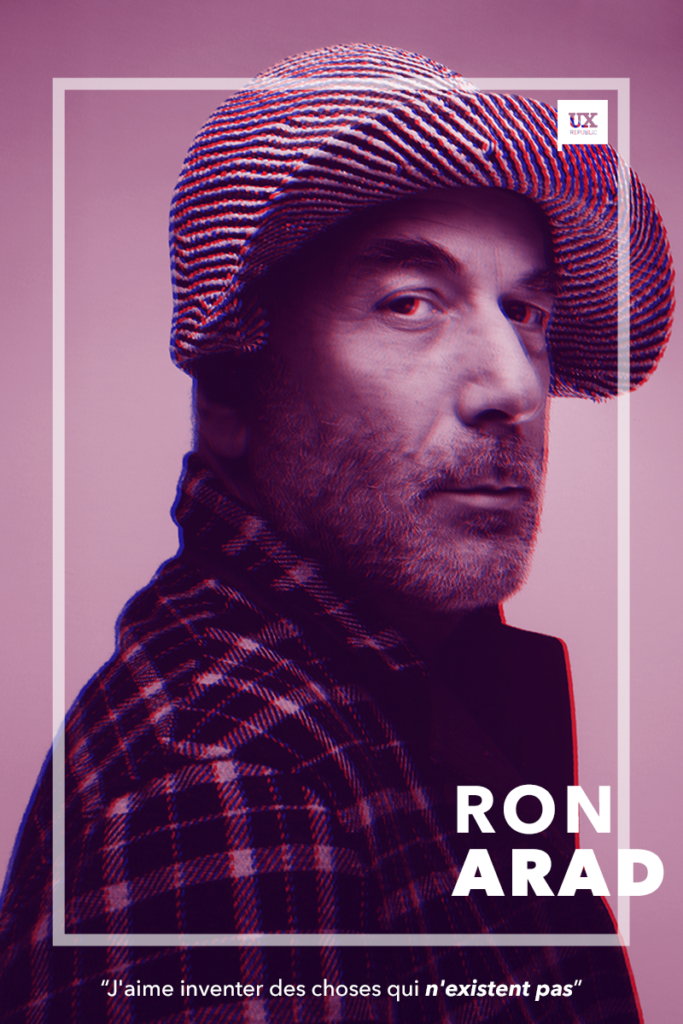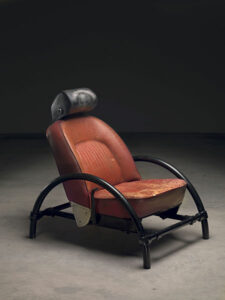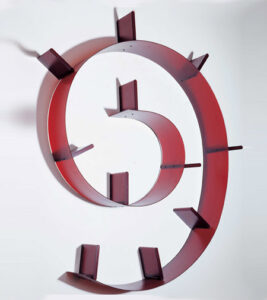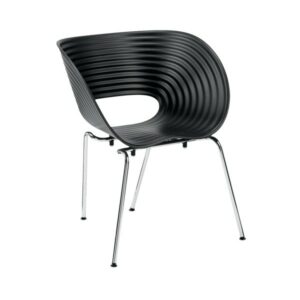
At UX-Republic, we believe that creativity, design, intelligence of the human/object relationship are obviously found on applications, websites.
But we are convinced that inspiration can be found at every street corner: on a sign, an everyday object or a building.
We are also extremely sensitive to art not applied to a client problem, because it is a free electron that will explore paths that are still unknown. This is why each month we visit during our UX-DAYS an exhibition on architecture, art Brut, pop culture, object design, typography….
To continue this approach, we have created this collection of great designers/artists who inspire us on a daily basis in our customer issues.
Ron Arad, designer, architect and artist
> Who has never dreamed of owning a unique object at home?
Ron Arad is a London designer, born in Tel Aviv in 1951. Ron Arad studied at the Jerusalem Academy of Art, then at the Architectural Association School of Architecture, in London. He began to be recognized in the 1980s, and in 1981 founded his first studio, One Off Ltd, with Caroline Thormann. They then embarked on the artisanal production of original furniture, made for the most part in welded sheet steel. He considers design as an art in its own right.
- In 1981: He founded his first studio One Off Ltd with Caroline Thormann.
- In 2008: he designed the Bauhaus Museum in Tel-Aviv.
- In 2010: he also designed the Design Museum Holon.
> Creations in all forms
At the same time, Ron Arad continues to create for the industry by collaborating with major publishers (Vitra, Fiam, Kartell, etc.) anderasing the boundaries between art and design, it seeks to confuse the user by introducing uncertainty as to the use of an object. The unreadable forms of his creations, which a priori look more like sculptures, push the user to “confront” them in order to transform them into pieces of furniture.
Uninterested in mass production, Ron Arad essentially produces unique objects, which restrict themselves to any utilitarian aim. These furniture-sculptures produced in limited series are sold at exorbitant prices. Some of these studio pieces become industrial products (this was particularly the case for his Bookworm shelf, originally made of steel and then made of plastic by Kartell.)
He has also worked as an architect and draftsman for nearly thirty places. In 2008, he designed the Bauhaus Museum in Tel Aviv. He also designed (with Bruno Asa) the Design Museum Holon. Inaugurated in 2010, the latter is the first Israeli museum dedicated to design.
> A complete artist
These pieces are called “one-offs” because they are unique pieces: Ron Arad attaches great importance to the unique or limited character of his works. (One Off also being the name of his first company.) He uses technologies and materials with completely new modalities and forms. Manipulation, transformation and experimentation are the key words in the spirit of his creations.

1981, The Rover armchair

1993, the Bookworm shelf which is now made of plastic
1999, The Tom Vac chair
Other pieces that have contributed to its fame are the “Big Easy” (1988/89), “Little Heavy” (1991), and, in 2000, the “Victoria & Albert” chair. Thanks to his choice of materials, workmanship, manufacturing techniques, and unusual shapes, Ron Arad has established himself in the furniture landscape, as well as real estate.
> An influence
He created unbalanced pieces, with an aesthetic that was sometimes disturbing and not always functional. He shakes up the usual codes of design to imagine another way of seeing things: He even baptized his retrospective “No Discipline” because his work is neither architecture, nor design, nor art. . It's all three at once. Through his works, he expresses his freedom of expression. Moreover, Ron Arad went to great lengths in experimentation. He wondered about the impact of design in society by wondering how to reinvent furniture through a less technical prism. When we look at his raw works from the beginning of his life until today, we realize that they are in a way a reflection of society, in perpetual movement and innovation.
“The design that excites me the most is the one that I haven't seen yet.”
Lisa Grandclement, UX Activist @UXRepublic
UX/UI ECO-DESIGN # Paris
SMILE Paris
163 quay of Doctor Dervaux 92600 Asnières-sur-Seine
DESIGN THINKING: CREATING INNOVATION # Belgium
UX-REPUBLIC Belgium
12 avenue de Broqueville - 1150 Woluwe-Saint-Pierre
MANAGING AND MEASURING UX # Paris
SMILE Paris
163 quay of Doctor Dervaux 92600 Asnières-sur-Seine
DESIGN SPRINT: INITIATION & FACILITATION # Paris
SMILE Paris
163 quay of Doctor Dervaux 92600 Asnières-sur-Seine
UX-DESIGN: THE FUNDAMENTALS # Belgium
UX-REPUBLIC Belgium
12 avenue de Broqueville - 1150 Woluwe-Saint-Pierre
GOOGLE ANALYTICS 4 #Paris
SMILE Paris
163 quay of Doctor Dervaux 92600 Asnières-sur-Seine
ACCESSIBLE UX/UI DESIGN # Belgium
UX-REPUBLIC Belgium
12 avenue de Broqueville - 1150 Woluwe-Saint-Pierre
EXPERIENCE MAPPING # Paris
SMILE Paris
163 quay of Doctor Dervaux 92600 Asnières-sur-Seine













